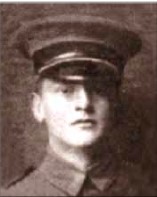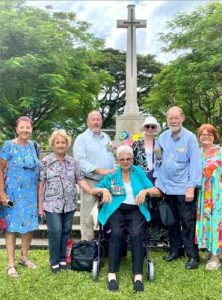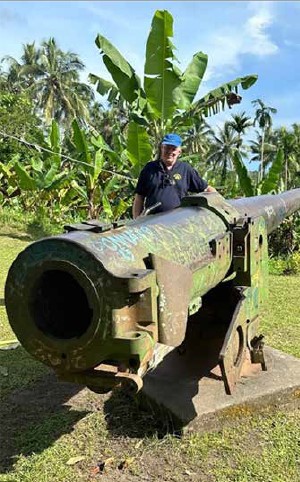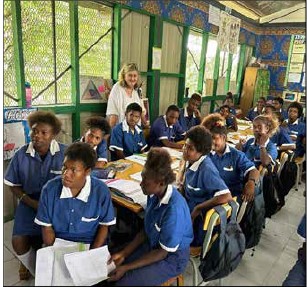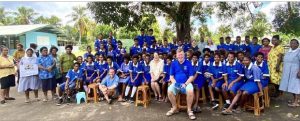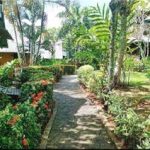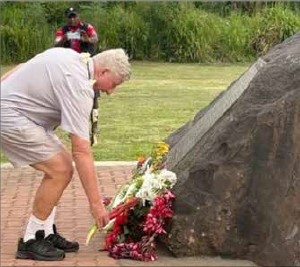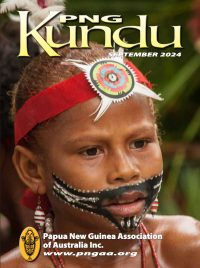MEMORIAL NEWS
2024 NSW Premier’s Reading Challenge
This aims to encourage a love of reading for leisure and pleasure in students, and to enable them to experience quality literature. It is not a competition but a challenge to each student to read, to read more and to read more widely. The Premier’s Reading Challenge (PRC) is open to all NSW students in Kindergarten to Year 10. It was open from February to late August 2024.
Recently we discovered that Sue Lawson’s book, Finding Darcy, had been included in the list of books to read for the NSW Premier’s Reading Challenge 2024. The book is based on her grandfather, William Avenel McLennan, VX23813, 2/22 Battalion, who is listed as dying on the Montevideo Maru. The main character is a young girl who undertakes a history project at her school and discovers that her great grandfather died on the Montevideo Maru. Finding Darcy has student worksheets available for use in schools. These are also available on the Rabaul & Montevideo Maru website.
School History Cruise Program for Sydney Harbour
In conjunction with the Chief of Navy and the Commander of the Fleet, the Naval Historical Association of Australia has organised a 2-hour School History Cruise Program for Sydney Harbour. The Montevideo Maru will be included in the history of the Navy to highlight the need to find ships and bring some closure.
2024 Premier’s Anzac Memorial Scholarship (PAMS)
This runs from 30 September until 10 October and will travel to Japan. Twenty scholars and three teachers with a shared passion for history will participate in an intensive study tour to develop their knowledge and understanding of the history of Australians at war by visiting significant military and cultural sites in Tokyo, Hiroshima, Nara and Osaka. Dr Keiko Tamura, Tour Historian, Australian National University, will accompany the students.
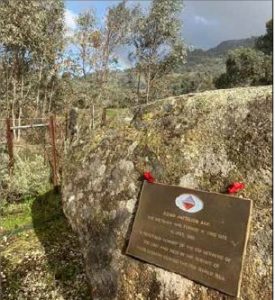 In encouraging schools to use the Rabaul & Montevideo Maru Education Program and website, our Education Coordinator, Patrick Bourke, often looks for connecting links, and this is something all members can do. We then write to the school to alert them, and provide some further information and links so that the history is interconnected. We hope they will use it as a learning tool with the students. Any of our members can do this. We would love to hear if you do!
In encouraging schools to use the Rabaul & Montevideo Maru Education Program and website, our Education Coordinator, Patrick Bourke, often looks for connecting links, and this is something all members can do. We then write to the school to alert them, and provide some further information and links so that the history is interconnected. We hope they will use it as a learning tool with the students. Any of our members can do this. We would love to hear if you do!
In reading support documentation for the Premier’s Anzac Memorial Scholarship this year we found that one of the Rabaul Australian Army Nurses, Mavis Cullen, who was imprisoned in Japan during WWII, was an ex-student of Pymble Ladies College in Sydney. Mavis Cullen had also been a nurse at the Yass Hospital prior to joining the Australian Army Nursing Service. She received a Mentioned in Despatches, a military award, for her war.
One of the Pymble girls, Lauren Korenblyum, has been selected to go on the trip—see the publicn announcement of successful students in this competition at https://www.veterans.nsw.gov.au/education/premiers-anzac-memorial-scholarship/pams-2024/
This is a wonderful connection for this student to have in her study of this history.
Traawool 2/22nd Battalion Gathering, 28 July 2024
Over 50 people attended a 2/22nd gathering at the Tallarook pub for lunch and then headed out to the Trawool Memorial rock, the site where the 2/22nd was formed. Everyone enjoyed the sunshine, seeing the 2/22nd rock formation on the hillside and the nearby plaque (below left) and flagpole. With thanks to our photographer, Dave Evans.
WL ‘Birdie’ Heron MID and the New Britain Open Golf Championship
Considering the Rabaul Golf Course had suffered two major disasters since 1937—both completely destroying the course—the idea of a Territory Open Golf Tournament
in 1952, sounded extremely ambitious. It was not until 1951 that the course was actually playable.
Yet in 1952 the more determined members decided to hold the Open. In that year the New Britain Open was born. It remains an open tournament and all amateur, professional and associate golfers from Papua New Guinea, Australia and anywhere else are welcome to participate.
The trophy that is played for and proudly cherished by the club is the WL ‘Birdie’ Heron Memorial Cup. Birdie was a World War I veteran who lost one eye during the fighting and took up Tovakundum Plantation when the Australian Government expropriated land from the Germans. He played golf regularly but was never renowned for doing anything spectacular. The name ‘Birdie’ was a nickname affectionately given by friends, not because of his prowess at golf, but for the way he looked at you with his one good eye.
Tragedy struck with the start of World War II and the invasion of Rabaul by the Japanese. Birdie was last seen being led away as a prisoner. His daughter, later to become Mrs Pethebridge, inherited the property, and in 1952, donated the cup in memory of her father.
The Australian Golf Heritage Association Museum is lucky enough to have three trophies in its collection, all courtesy of ex-professional, and good friend of the Society, Edgar Oakman. Edgar won the event in four consecutive years, and it is the 1960 version that is featured here.
It is described as ‘a small, silver-plated cup type trophy. On a Bakelite plinth, it has a handle on both sides, and a separate, snug-fitting lid.
The front of the trophy is engraved with information regarding the event, and its winner (Edgar W Oakman).’
Who was WL ‘Birdie’ Heron?
Wilfrid Ledlie Heron was born in Melbourne on 20 July 1894. He attended Melbourne Grammar School playing cricket and Australian Football, and serving in the cadets, before commencing employment with the pastoral company Dalgety & Co. in 1913. While working for Dalgety’s he played Australian Rules Football for Melbourne University and, after a goalless first season in 1913, scored five goals during the 1914 VFL season.
‘Birdie’ Heron enlisted in the AIF in August 1914, having already spent several years serving in the Army Reserve. At 20 years of age, six foot four inches (193 cm) tall and tipping the scales at 200 lbs (91 kgs), he certainly would have stood out in a crowd. Serving in the 7th Battalion, he was part of the landing at Anzac Cove at Gallipoli on the morning of 25 April 1915, coming ashore as part of the second wave.
‘Birdie’ Heron was Mentioned in Despatches for ‘various acts of conspicuous gallantry during May and June 1915 at Gallipoli’ before he fell victim at the Battle of Krithia to a gunshot wound to the head and lost his right eye. He was invalided home as a lieutenant and, after serving time as an administrative officer at Puckapunyal, returned to serve in France where he was again injured. He was repatriated to England where he served as the Adjutant at a Training Unit for the rest of the war. He returned to Australia in 1919 as a captain.
After the war he became a coconut plantation owner in Papua New Guinea on an estate expropriated from the previous German owner.
He married Madge Laurence Clapin in June 1929 but she died in January 1933, shortly after giving birth to their only child, a daughter. In November the following year, he married Audrey May Clapperton.
‘Birdie’ Heron continued to manage the Tovakundum Estate Plantation, 15 miles from Rabaul, making frequent trips back to Melbourne.
Following the outbreak of war in the Pacific, most civilian men were forced to stay in Rabaul. On 23 January 1942, a Japanese force of around 5,000 troops landed on New Britain. Outnumbered and outclassed, Australian resistance was limited, and over 1,000 military personnel and civilians were taken prisoner.
Of the prisoners, at least 800 soldiers and 200 civilians—‘Birdie’ Heron amongst them—were loaded onto the ship, Montevideo Maru, for transport to Hainan. The Montevideo Maru, which wasn’t marked as a prisoner-of-war ship, was sunk off the north coast of Luzon by the US submarine USS Sturgeon on 1 July 1942. There were no survivors from the contingent of prisoners, and the sinking is considered the worst maritime disaster in Australia’s history.
What remains a mystery is why, 10 years after the sinking of the Montevideo Maru, when the Rabaul Golf Course had been rebuilt (requiring the removal of many unexploded bombs), WL ‘Birdie’ Heron’s name is associated with the golf trophy, never mind a trophy for an event that has been running for nearly 70 years.
Information from the 30th Anniversary (1982) and 71st Anniversary (2023) New Britain Open, Rabaul Golf Club Program, with thanks to Mavis Host and Darrie Nightingale, and the Australian Golf Heritage Association and Australian War Service Records research with thanks to Patrick Bourke.
Jet Flights Return to Rabaul
For those who travelled to Rabaul in April 2024 from Australia, you will be happy to know that Air Niugini has resumed Fokker jet operations into Tokua Airport!
It has been over 12 months since Air Niugini was able to operate jet services to Rabaul. This has had a major impact on tourism and trade into and out of East New Britain. It is also not the first time the runway was repaired. In 2021, Tokua reopened after runway repairs were undertaken. Unfortunately, due to the poor quality of repair work, and potentially jeopardising safety of jet operations, Air Niugini chose to downgrade to a smaller Dash 8 service with only 5 – 15 passengers per flight depending on weight. Air Niugini CEO, Gary Seddon, said, ‘We need good airport infrastructure that can meet the increasing demand for air travel.’
The National Airports Corporation (NAC) managed the repair work and Air Niugini had to regularly reschedule around the work.
Rabaul & Montevideo Maru Website
The website has had many additions made to it recently, so have a browse!
Our thanks to Patrick Bourke for his assistance in re-doing the education program to ensure it is up to date, and easy to use. Also, for the many pieces of information he sends in.
A few more tributes have been added to the electronic tributes section, new memorials have been added, news items have been updated and external links that have changed to ‘error’ have been removed. Where possible, we will try to keep information on the website and use hyperlinks so that the errors don’t persist.
It would be great to hear of members recommending the education program for use in the history departments of secondary schools. It is one way to ensure the story of what happened to the civilians in the New Guinea Islands, and the men of Lark Force and 1 Independent Company, endures.
95th Birthday Celebrated in Rabaul
The Hull family returned to Rabaul to celebrate Olive’s 95th birthday, and to attend the Anzac Day services in Rabaul and at Bitapaka, along with visiting places with special memories.
Rabaul Memorial Tour, April 2024
Among the members on the tour, featured in the last issue, were Rod and Sandy Miller, and Lauren and Doug Wood, and in this specially enlarged issue, we asked if they would share their memories.
Of particular interest during the tour was Sandy’s visit to the Mary Immaculate Primary School in Vunapope, where the headmistress discussed with the group if a teacher from the school could be supported to visit an Australian school to experience how students learn in Australia. If you have a contact at a school who could help make this happen, and you’re able to billet the teacher, please email Andrea at coordinator@pngaa.net. Once we have the trip planned, we could then fundraise to make the flights happen.
Andrea Williams
Rabaul Twenty Years On
Prior to ANZAC day this year, I was last in Rabaul in 2002. Back then, I was travelling with Bert Speer, who was a part of the medical administration in Rabaul in the 1960s. In 2002, there were still a small number of locals who had stuck with Rabaul through thick and thin. Matt Foley, who had been a coastwatcher in the area during the war, and a plantation owner postwar, had confidence that Rabaul would rise again from the ashes after the 1994 eruption. With its deep-water harbour, it managed to survive the 1937 eruption, the 1941 eruption, and the devastating bombing of WWII and was restored to the bustling centre of commerce it once was.
However, today’s reality is a little different.
Twenty-one years on, most traces of ‘old’ Rabaul have disappeared, with the Cenotaph, Montevideo Maru Memorial, Queen Elizabeth Park, Yamamoto’s Bunker, the New Guinea Club and the ever-resilient Rabaul Hotel surviving.
Concrete steps leading to non-existent buildings and parking bay lines on Mango Avenue hint at a once vibrant township that no longer exists. With the volcano having been dormant for a number of years, the vegetation has slowly returned to the once barren landscape of volcanic scoria, transforming it from its moonscape appearance in 2002 to a lush tropical jungle today.
Although the natural beauty of the volcanic springs at the base of the volcano remains a major attraction, the once proud broken-in-half Japanese Betty Bomber, which sat in a crater on the edge of the old Rabaul airstrip, has all but disappeared with only parts of its heavy engines remaining.
The Coastwatcher Memorial Lookout has also changed substantially from a well-kept terraced park to a local school with a number of village houses surrounding it; however, its magnificent view of Rabaul remains.
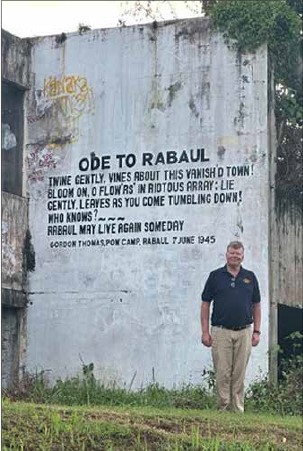
Rod Miller in front of an inscription copied from
what Edward Llewellyn Gordon (known as Gordon)
Thomas wrote inside a POW Camp at Rabaul on
7 June 1945. Gordon was one of the few expatriates
who survived the Japanese.
Those who made the journey to attend the services at the Montevideo Maru Memorial, the ANZAC Day Dawn Service and Bitapaka greatly appreciated them. Thanks go to the locals, including Suzie McGrade OAM of the Rabaul Hotel, who made it all happen.
With the history of Rabaul linked to Australia by two world wars, the loss of Australia’s first submarine, AE1, and the greatest single loss of Australian lives in WWII with the sinking of the Montevideo Maru, its importance to the defence of Australia is somewhat forgotten. However, Rabaul these days still sometimes caters to cruise ships that are able to dock due to its deep-water harbour. Their visitors are well catered for by local guides who take them on tours around the aptly described ‘Pompei of the Pacific’.
Unfortunately, during our visit there was a local disturbance that closed the main area of Rabaul to traffic, which hindered our sightseeing for a day and closed all the businesses. However, this is nothing compared to the uncertainty of how Air Niugini performs.
When travelling in PNG, one must allow these problems to arise and accept them as part of the adventure of travel as they occur. The airline problem is a major one. Although we weren’t informed when booking our flight, the PNG National Airports Corporation had been digging up half of Tokua Airstrip for needed maintenance for several months prior to our visit. This impacted Air Niugini’s regular service with many unscheduled changes, weight and passenger restrictions.
Whilst necessary, constant rescheduling was challenging and costly when connecting flights had to be rescheduled. This makes it very difficult not only for travellers, but also for those trying to run tourist-based industries such as hotels and resorts in New Britain.
With the development of the main area of New Britain, now sensibly centred on Kokopo, what Rabaul offers today is certainly a different experience to most other adventures in PNG.
ROD MILLER
A School Visit to Vunapope
It was an unexpected privilege to make a school visit during our trip to PNG in April 2024. Andrea Williams, assisted by Dame Sandra Lau, co-ordinated a visit for a few of us to the Mary Immaculate Catholic Primary School in Vunapope.
We arrived on a day when most of the students, except Year 8, were unable to attend because of a toilet block problem. But as someone who works in a school, and this was my second visit to PNG, it was still a fascinating glimpse into the PNG education system.
Our first stop was, in fact, a staff room, where the staff were using the mainly pupil-free day to handmake class resources. I recognised very familiar phonics-type posters, which we purchase or print off and laminate in Australia without a thought. The staff, however, were painstakingly hand-printing and drawing beautiful illustrations. For instance: ‘C…c…c… C is for coconut. A coconut tree is tall.’ There were syllabus textbooks, but clearly a lack of the necessary quantity, and again staff were making posters with reading information on science, history, etc.
We visited a classroom with the Year 8 students, and they seemed happy to share what they were working on; it was so interesting to have a look through their workbooks. There is obviously a range of ages in the year group, and I didn’t really ascertain why. The school starting age is gazetted at six or seven years, but there seemed to be an age range of 14–17 in Year 8. Nonetheless, what immediately struck me was how good the standard seemed. Neat writing, good spelling and very recognisable topics. Looking at teacher charts on the walls, there were classroom expectations and behaviour charts. Students received a cross for being late, out of uniform, swearing, etc. … a couple of kids had crosses against their names for ‘escaping from the classroom’; not how we manage poor behaviour choices in NSW schools, but teachers obviously face similar challenging issues in schools wherever children are.
The PNG Syllabus mandates that children are taught English for at least an hour a day from Prep School, and this increases from there. The Year 8 students all speak at least three languages: their local language (given there are 832 living languages in PNG), Tok Pisin (their lingua franca form of Melanesian Pidgin English) and English. It seemed remarkable to me, however, that they were working on topics such as the water cycle or the American Revolution with such competent written English skills.
The senior classrooms were in a fairly modern building, but the Elementary (K-2) classrooms were very simple, with earth floors, wooden seating and blackboards. It seems an absolute credit to the teaching staff that the children still seem to learn regardless of a very basic environment.
After our tour, the students gave us a wonderful concert, singing and playing guitars. We donated money and some resources we had brought from Australia as a thank-you for the opportunity to visit their school.
Nelson Mandela said, ‘Education is the most powerful weapon we can use to change the world,’ and although I think Mary Immaculate is probably a more well-resourced school than many, it really felt like a positive experience knowing that there are increasing educational opportunities in PNG.
SANDY MILLER
Editor’s Note: Sandy and Andrea kindly provided some great photos of this visit which have been uploaded on the PNGAA website.
Anzac Day 2024 in Rabaul
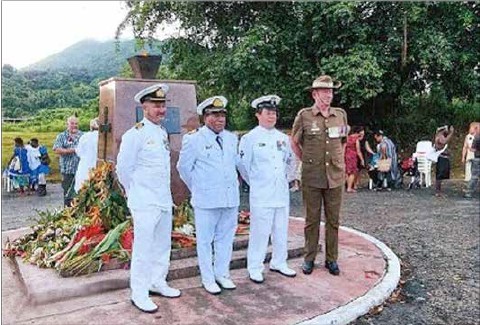
L-R: Commander Jonathan Corker, RAN; Commander Graham Lebitina, PNGDF;
George Cheng, PNGDF; Lt. Col. Anthony Evans
At the invitation of Andrea Williams, PNGAA’s Past President and a member of the Silentworld Foundation team that discovered the wreck of the Montevideo Maru a year ago, my wife Laurel and I joined 30 members of the 2/22nd Battalion Lark Force Association to attend the three memorial ceremonies on the afternoon of 24 April 2024 and the morning of 25 April. We were joined by Sandra and Rod Miller, Rod being the author of the book, Lost Women of Rabaul.
Monday, 22 April, saw us depart Brisbane mid-morning with Air Niugini to Port Moresby, then transfer to the Dash-8 mid-afternoon flight to Rabaul. A short half-hour trip over the lush Owen Stanley Range with the Buna and Gona coastline in the east; all quiet and serene now but the keeper of brutal secrets of bravery, death and hardship. A further hour over the beautiful blue Solomon Sea and half an hour over the lush green interior of Northern East New Britain, the island so named by William Dampier on his visit in 1700.
Rabaul was once a picturesque small town that served as the capital of German New Guinea from the mid-1800s until 1914, when World War I came to Bitapaka wireless station (more of this later) located on beautiful Simpson Harbour, the north-western extension of Blanche Bay. This Bay runs east to the seven islands that form the Duke of York Islands and is protected to the north and east by New Ireland. As the eruption occurred 30 years ago, vegetation has returned the post-eruption moonscape to a lush tropical jungle.
Rabaul sits on the junction of three massive tectonic plates (the Pacific Rim of Fire) making it one of the most volcanically active areas in the world. Major eruptions have occurred three times in the past century—1937, 1941 and 1994.
Only days after the Japanese landing on 23 January 1942, of approximately 5000 troops with the reported loss of only 16 men (unsubstantiated), they captured Rabaul from Lark Force and quickly established their Pacific operational headquarters under the command of Admiral Isoroku Yamamoto. Yamamoto was shot down near Buin in the south of Bougainville in 1942, thanks to information supplied by coastwatchers during Operation Ferdinand. By May 1942, the Japanese deemed themselves invincible, having established control of the corridor on the north and east coasts of New Guinea, covering Madang, Lae, Salamaua, Buna and Gona. Their land defeat at Milne Bay in June 1942, proved to be the high watermark of the Japanese advance south.
Fortunately for visitors, the Rabaul Hotel stands alone on the devasted Mango Avenue, providing a welcome venue for lunch and accommodation for the Lark Force Association visitors. The nearby Cenotaph, the Montevideo Maru Memorial, New Guinea Club and Rabaul Yacht Club have all been reclaimed from the ash and are functioning.
On Tuesday, 23 April, we departed our beautiful accommodation on the shores of Blanche Bay at Kokopo Beach Bungalows for a full-day tour along the deteriorating coast road past two Japanese tunnels, the Blue Lagoon, a destroyed Japanese crane and Mount Vulcan. We drove into the once thriving CBD of Rabaul, the overgrown and ash-covered Rabaul airport to the Matupit hot sulphur springs, where steam rises from the harbour in the prevailing winds. After a nice lunch in the well-appointed Rabaul Hotel dining room that included two beers of SP, we continued on to the picturesque old governor’s residence facing north over New Ireland and then to the Volcano Observatory overlooking Simpson Harbour wharf area and the three volcanos that surround the town. In the thousand-kilometre Bismarck volcanic arc between Manam, near Wewak, to Rabaul—11 volcanos have remained active since records began in 1850.
Feeling safe with the Observatory monitoring seismic activity we returned to Kokopo via the sealed inland road and ‘Four Ways’. After a sunset boat ride and a swim at the Duke of York Islands, we returned to a lovely fresh lobster dinner. Doing it tough in the Tropics!
On Wednesday, 24 April, at 11 am, we ventured via the inland road and Lark Force’s meeting place, ‘Four Ways’, just south of Malaguna in the mountains behind Rabaul. Just before Rabaul CBD, we turned left up the hill and, for 30 minutes, drove along the North Coast Road to the beautiful resort of Kulau Lodge for lunch and a swim off the white sandy beach. Their welcome sign read, ‘Leave only your footprints and take with you wonderful memories.’ Here, our group of five connected with the Lark Force Association’s group, where we heard about their emotional journey to Tol Plantation and the memorial cairn erected in 1987 on-site by the Australian Army during a training exercise called ‘Rabaul Walkabout’.
At 5 pm, we assembled in a large grassed area on the foreshore facing west near two large basalt rocks that serve as the Montevideo Maru Memorial. A service was held at dusk and all present were invited to lay wreaths. I laid a wreath on behalf of the Battle For Australia Association (BFA) while Andrea Williams laid one for the PNGAA and Montevideo Maru Associations. Other attendees included Rabaul’s mayor, Mr Changol Manuai, and three members of the Australian and PNG defence forces, namely: Lieutenant Colonel Anthony (Tony) Evans, based at Murray Barracks, Port Moresby; Commander Graham Libetina, PNG Navy; and Commander Jonathan Corker, Royal Australian Navy (RAN).
A very nice meal and informal get-together at the nearby New Guinea Club was organised by Rabaul Hotel’s Susan McGrade OBE following the ceremony.
At 3 am on Wednesday, 25 April, the phone alarm awoke us, and by 3.45, we were in a three-SUV convoy in the pouring rain. Via a dark, quiet inland road, we arrived at the fire-lit Rabaul Cenotaph, arriving at 4.30 am. Fortunately, the rain ceased and about 100 people, including the four dignitaries from the previous evening, assembled in a semi-circle around the Cenotaph and lectern, while Winston Churchill’s 1939 ‘We Are at War’ address was broadcast repeatedly. With candles lit, at 5.30 am the ceremony began, and addresses were given by Lt Col Evans and the Co-ordinator of the 2/22nd Battalion Association, Fraser Harry, son of the 1942 escapee Bill Harry. It was a very moving scene.
All present were invited to lay flowers and Laurel and I took the opportunity to do so on behalf of the Battle For Australia Association (BFA). The ceremony closed with the Last Post playing followed by a minute’s silence, the Reveille, and singing of the National Anthems of PNG, Australia and New Zealand. The Cenotaph glowed in the morning sunshine. After an enjoyable ‘gunfire’ breakfast of Bundy rum and tea at the Rabaul Yacht Club from 7 am, we returned to Kokopo Beach Bungalows for a brief rest.
At 10.30 am, we were back on the road travelling along Blanche Bay’s coast road, passing the beautiful Rapopo Beach Resort to Bitapaka Memorial Cemetery. Established in 1945, this is the final resting place for WWI and WWII soldiers. Six WWI soldiers, killed during the taking of the German wireless station that was situated across the road from the cemetery six months before the Gallipoli landing, are buried here. The Cemetery is a beautiful grassland garden donated by PNG to Australia in perpetuity. It is dominated by numerous towering shade trees. The WWI Memorial was rebuilt after being destroyed by the Japanese during WWII.
Commander Jonathan Corker, RAN, was the master of ceremonies for an 11 am service. The Governor of East New Britain Province, Governor Hon. Michael Marum, and the Mayor of Rabaul, Mr Changol Manuai, gave addresses before Lt Col Evans delivered the Commemorative Address. Wreaths and flowers were laid, followed by the Ode to the Fallen delivered by Commander Graham Libetina, PNGDF. I learnt that Commander Libetina was from Milne Bay and raised in Alotau. At the gunfire breakfast, he told me that his father helped the Allies in June 1942, in the Milne Bay area and that his father’s actions led him to pursue a naval career.
After the Bitapaka Primary School choir sang, there were the three National anthems and the ceremony concluded, after which the much-appreciated free cold water and soft drinks were handed out. Lt Col Evans addressed the 50-strong school choir, presenting the School Captain with a red and white rugby league football. The gesture was greeted with huge smiles, giggles and much laughter from the children.
This was a fitting end to our ANZAC tour—three memorable services in 19 hours. All three were well-run and attended by approximately 100 people. The singing by the respective choirs was enjoyable and all the students seemed to be very aware of the importance of the occasion.
LAUREL AND DOUG WOOD

